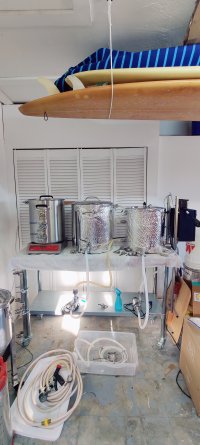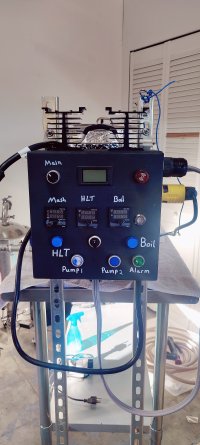Little help wiring up a DVA 120. The instructions from auber ins. has the 2 wires for voltage on either end of a heater:

I am using this guide and it has the wires to the 240 side of the main power contactor:
View attachment 872156
I don't know if I care what the power going to the heater is doing. Just concerned what the power in the system is at. Which way is correct? Tyia
The Auber drawings are WRONG, and Auber admits as much in their Wiring Tips:
"Wiring Tips:
Here are two typical wiring diagrams for PID and SSR controlled heating system, one for 120V system and one for 240V system.
1. The DVA-120 gets its power only when it measures a 80 ~ 500 VAC from its voltage measurement port. As the PID starting pulsing the power to the heating element, the voltmeter will lose its power when the heating element is turned off. Move wire A to Pin #1 of the SSR so that the voltmeter stays on all the time." (emphasis added)
With the power/voltage sense leads wired in parallel with the element, the power to the meter gets shut off when the element is not on. The way SSRs modulate power is by turning power fully on for a short period and then fully off for another short period. They don't actually create partial power on an instantaneous basis, but rather partial power averaged over the cycle time of the pulse width modulation circuit.I have no idea why Auber hasn't corrected the drawings on their web page.
Brew on


































![Craft A Brew - Safale BE-256 Yeast - Fermentis - Belgian Ale Dry Yeast - For Belgian & Strong Ales - Ingredients for Home Brewing - Beer Making Supplies - [3 Pack]](https://m.media-amazon.com/images/I/51bcKEwQmWL._SL500_.jpg)


























